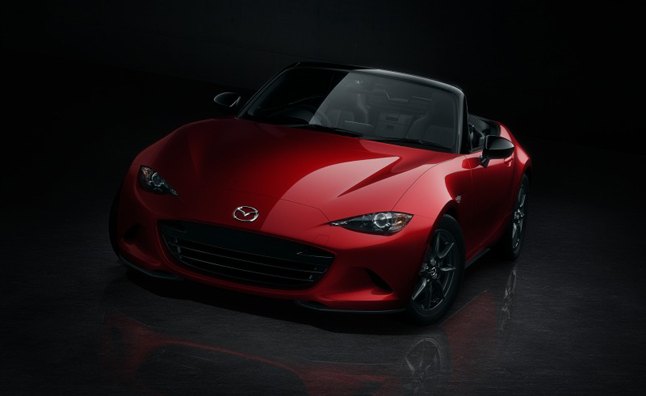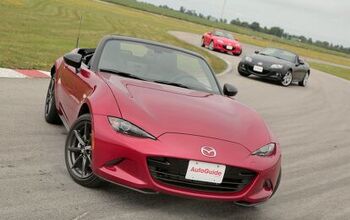2016 Mazda MX-5 Miata Engines Confirmed

Mazda has confirmed the engines that will power its new 2016 MX-5 Miata.
The Japanese automaker has revealed that the U.S. model for the 2016 MX-5 Miata will be powered by a naturally aspirated SkyActiv 2.0-liter engine mated to a six-speed manual transmission while the rest of the world will receive a 1.5-liter four-cylinder engine. Disappointingly, Mazda hasn’t announced the engines’ specifications, but the Mazda3’s 2.0-liter churns 155 hp and 150 lb-ft of torque while the 1.5-liter provides 99 hp and 110 lb-ft of torque.
SEE ALSO: 2016 Mazda MX-5 Miata Specs Reportedly Leaked
If those figures sound disappointing, especially considering the current Miata produces 167 hp and 140 lb-ft of torque, don’t worry just yet. The company said that “all available drivetrains have been specifically tuned for the all-new MX-5,” which means they’ll like have more performance in the roadster. Regardless, the new Miata does weigh just 2,200 lbs so it’ll feel even better than the current model even if the performance figures remain the same.
GALLERY: 2016 Mazda MX-5 Miata Live Photos
GALLERY: 2016 Mazda MX-5 Miata
Discuss this story at our Mazda MX-5 Miata forum

Jason Siu began his career in automotive journalism in 2003 with Modified Magazine, a property previously held by VerticalScope. As the West Coast Editor, he played a pivotal role while also extending his expertise to Modified Luxury & Exotics and Modified Mustangs. Beyond his editorial work, Jason authored two notable Cartech books. His tenure at AutoGuide.com saw him immersed in the daily news cycle, yet his passion for hands-on evaluation led him to focus on testing and product reviews, offering well-rounded recommendations to AutoGuide readers. Currently, as the Content Director for VerticalScope, Jason spearheads the content strategy for an array of online publications, a role that has him at the helm of ensuring quality and consistency across the board.
More by Jason Siu
































Comments
Join the conversation